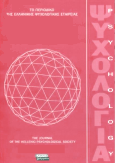The explanatory coexistence of scientific and supernatural explanations: A meta-analysis

Abstract
The explanatory coexistence of scientific and supernatural explanations in the same mind challenges the most influential theories of knowledge acquisition in psychology. It shows that although individuals acquire the scientific theories, the supernatural explanations are also used as causal explanatory frameworks even by experts. The present review and meta-analysis aimed to explore the factors that could influence the coexistence of supernatural and scientific explanatory frameworks in the concepts of the origins of life, illness and death/afterlife. On the basis of 35 identified articles (45 studies) that have been published between 1985 and 2016 and that examined both scientific and supernatural explanations within these concepts, the impact of age, religiousness, scientific expertise, cultural background and contextual factors was explored. Results suggest that although religiousness, cultural background, and contextual information have a large effect on the concepts of death/afterlife, illness and the origins of life respectively, the magnitude of the average effect depends on the concept.
Article Details
- How to Cite
-
Pnevmatikos, D., & Georgiadou, T. (2019). The explanatory coexistence of scientific and supernatural explanations: A meta-analysis. Psychology: The Journal of the Hellenic Psychological Society, 24(1), 177–205. https://doi.org/10.12681/psy_hps.22420
- Issue
- Vol. 24 No. 1 (2019)
- Section
- RESEARCH PAPERS

This work is licensed under a Creative Commons Attribution-ShareAlike 4.0 International License.
The journal PSYCHOLOGY adopts a Platinum open-access policy. Submission, processing or publication costs are waived by the Hellenic Psychological Society. Papers published in the journal PSYCHOLOGY are licensed under a 'Creative Commons Attribution-ShareAlike 4.0 International' licence. The authors reserve the copyright of their work and grant the journal the right of its first publication. Third-party licensees are allowed to use the published paper immediately after publication as they wish, provided they retain the defined by the license copyright formalities, regarding the reference to its author(s) and its initial publication in the journal PSYCHOLOGY. Moreover, any adjusted work should be shared under the same reuse rights, so with the same CC license.




